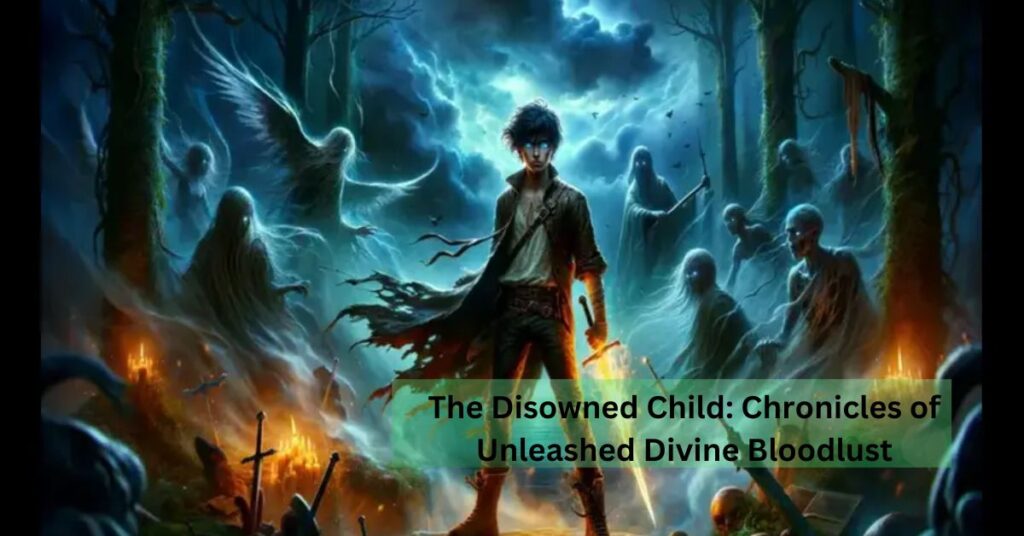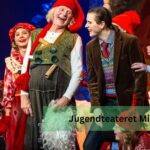“The Disowned Child: Chronicles of Unleashed Divine Bloodlust” is a gripping tale that delves into the struggles of a disowned protagonist who grapples with newfound divine powers and a thirst for vengeance. This story is set in a world teeming with mythological beings, divine conflicts, and the tumultuous journey of one individual caught between the realms of gods and mortals.
Setting the Stage
The world of “The Disowned Child” is a realm where the divine and mortal intersect, filled with ancient gods, powerful spirits, and society in the shadow of these mighty beings.
The landscape is a blend of ethereal beauty and ominous terrains, with towering temples dedicated to various deities, enchanted forests that serve as portals to divine realms, and cities that throng with both mortals and supernatural beings.
This world is governed by a delicate balance of power, where gods intervene in human affairs, often with devastating consequences.
In this world, history is marred by a tremendous divine war that took place centuries ago, a conflict that fractured the unity of the gods and altered the fate of mortals forever.
This ancient war is the root cause of the ongoing tension between divine entities, who vie for dominance, and mortals, who are often pawns in their celestial games. The legacy of this war is a world rife with distrust, where alliances between gods are fragile, and mortals live in constant fear of divine wrath.
Main Characters
The Disowned Child
The protagonist, known simply as “The Disowned Child,” is shrouded in mystery and tragedy. Abandoned at a young age, they have grown up on the fringes of society, ostracised for reasons beyond their understanding.
It is later revealed that they are the offspring of a forbidden union between a mortal and a god, which has cursed them with powers that they neither understand nor control. The disownment by their divine parent fuels their journey as they seek to understand their identity while battling the rage that simmers within.
Divine Entities
The divine beings in this narrative are not benevolent overseers but complex characters with flaws and agendas. There are gods of war, wisdom, deception, and vengeance, each representing different aspects of the human condition.
These gods are often at odds with one another, and their conflicts spill over into the mortal realm. Key divine figures include the God of Wrath, who seeks to manipulate the protagonist for his ends, and the Goddess of Mercy, who offers guidance but with hidden motives.
Supporting Characters
The story features a rich cast of supporting characters, including mortal allies who aid the protagonist in their quest, such as a seasoned warrior who trains them in combat, a wise old seer who helps unravel the secrets of their divine heritage and a fellow disowned individual who becomes both a rival and a confidant.
There are also antagonists, both mortal and divine, who seek to hinder the protagonist, each driven by their fears and desires.
Plot Overview
Inciting Incident
The narrative starts with a harrowing inciting incident: the protagonist’s disownment. This event is not just a familial rejection but a public spectacle that sees them cast out from society and marked as cursed beings.
During this traumatic moment, the protagonist’s latent powers are triggered, causing an uncontrollable surge of energy that results in unintended destruction. This incident sets them on a path of self-discovery and vengeance as they vow to confront the divine parent who abandoned them.
Act 1: Awakening
In the first act, the protagonist embarks on a journey of awakening both their powers and their understanding of the world. They encounter numerous challenges, from hostile townsfolk who fear their abilities to divine emissaries sent to either guide or eliminate them.
As they struggle to harness their sacred powers, they also grapple with internal conflicts—doubts about their worth, anger towards their divine parent, and fear of the uncontrollable nature of their abilities. This act lays the groundwork for their transformation from a scared, disowned child into a formidable force.
Act 2: Unleashed Power
The second act is a crescendo of power and conflict. The protagonist, now more attuned to their divine heritage, begins to embrace their abilities, using them to exact revenge on those who wronged them and to confront divine beings who stand in their way.
Key battles during this act showcase the protagonist’s growing mastery over their powers but also highlight the dangers of their unchecked rage. Their journey is marked by triumph and loss, as allies are gained and sacrificed, and the protagonist’s path becomes increasingly blood-stained.
Act 3: Confrontation
The story’s climax is a dramatic confrontation with the divine entities responsible for the protagonist’s suffering. This battle is not just physical but also ideological, as the protagonist challenges the very foundations of the divine order.
They question the gods’ right to meddle in mortal affairs and seek to carve out their destiny, free from divine manipulation. The final confrontation tests all the skills and powers the protagonist has acquired, culminating in a moment of choice: to succumb to their bloodlust or to transcend it and forge a new path.
Resolution
In the resolution, the protagonist’s journey comes full circle. They have faced their divine parent, avenged their disownment, and confronted the inner demons that drove them. The ending explores themes of redemption and the possibility of a new beginning.
While the protagonist may never fully escape their past or their divine nature, they find a measure of peace and acceptance. The story closes with a reflection on the cost of vengeance and the power of self-forgiveness, leaving the door open for future adventures in this richly woven world.
Themes
Divine vs. Mortal Conflict
One of the central themes of the story is the conflict between divine beings and mortals. This theme is explored through the protagonist’s struggles as they are caught between the mortal world they were born into and the divine lineage they inherited.
The narrative delves into the complexities of power, exploring how divine entities exert control over human lives and the consequences of their interference.
Identity and Belonging
The protagonist’s journey is a poignant exploration of identity and belonging. As a disowned child, they are in a constant search for their place in a world that rejects them. Their divine powers, while a source of strength, also serve as a reminder of their otherness.
This theme resonates throughout the story, highlighting the universal struggle of finding one’s place and the lengths one might go to reclaim or redefine their sense of self.
Power and Corruption
The story also delves into the theme of power and its corrupting influence. The protagonist’s divine abilities are a double-edged sword, offering the means to seek justice and posing the risk of becoming what they despise.
As they unleash their powers, they must navigate the fine line between righteous vengeance and destructive bloodlust. This theme is mirrored in the actions of the divine beings, who often abuse their powers with little regard for mortal lives.
Symbolism and Motifs
Blood and Divine Power
Blood is a recurring symbol in the narrative, representing the protagonist’s divine lineage and the violence that defines their journey.
It is a constant reminder of the protagonist’s connection to the gods and the destructive potential that lies within. The blood motif underscores the story’s exploration of inheritance, power, and the costs of vengeance.
Disownment and Exile
The motifs of disownment and exile are central to the protagonist’s story. These themes concern not just physical separation but also emotional and psychological isolation. The protagonist’s disownment serves as the catalyst for their journey, driving them to seek out a new identity and purpose beyond the constraints imposed by their divine parentage.
Writing Style and Tone
Narrative Voice
The narrative voice of “The Disowned Child” is both introspective and evocative, often delving into the protagonist’s inner turmoil. The story is told from a limited third-person perspective, allowing readers to intimately experience the protagonist’s journey while providing glimpses into the broader world of divine intrigue.
Tone
The narrative’s tone is dark and intense, reflecting the themes of vengeance, divine conflict, and the protagonist’s struggle with nature. Despite the bleakness, there are moments of hope and resilience, particularly as the protagonist confronts their fears and learns to wield their powers for a greater purpose.
Potential Audience and Market Appeal
Target Audience
“The Disowned Child” appeals to readers who enjoy dark fantasy, mythological retellings, and stories that explore complex character dynamics and moral ambiguity. Fans of narratives that feature anti-heroes, divine conflicts, and richly constructed worlds will find this tale particularly engaging.
Comparative Titles
Comparable works include dark fantasy novels like Joe Abercrombie’s “The First Law” series, which also features morally complex characters and intense battles, and mythological retellings like Madeline Miller’s “Circe,” which explore divine and mortal conflicts through the lens of a powerful, misunderstood protagonist.
FAQs
1. Who Is The Main Antagonist In “The Disowned Child: Chronicles Of Unleashed Divine Bloodlust”?
The main antagonists are the divine entities manipulating the protagonist’s life, particularly the God of Wrath, representing the primary challenge to the protagonist’s quest for self-discovery and revenge.
2. What Genre Does This Story Fall Under?
This story is best categorised as dark fantasy. It incorporates elements of mythology, supernatural powers, and a character-driven plot that explores moral ambiguity and divine conflict.
3. What Motivates The Protagonist In The Story?
The protagonist is primarily motivated by a desire for vengeance against their divine parent and the gods who have wronged them, as well as a personal quest for identity and belonging in a world that has rejected them.
4. Are There Themes Of Redemption In The Narrative?
Yes, themes of redemption are present as the protagonist grapples with their bloodlust and the consequences of their actions, ultimately seeking a path that transcends mere vengeance.
5. Will There Be A Sequel Or Continuation Of The Story?
The ending leaves room for future stories, suggesting that while the protagonist’s immediate journey may conclude, the broader conflicts between divine and mortal realms offer ample opportunities for further exploration.
Conclusion
“The Disowned Child: Chronicles of Unleashed Divine Bloodlust” is a compelling narrative that blends elements of dark fantasy, mythology, and character-driven storytelling. With its richly constructed world, complex characters, and exploration of themes like identity, power, and vengeance, it offers a thought-provoking and immersive reading experience. The story’s conclusion leaves room for future adventures, inviting readers to continue exploring the divine and mortal conflicts that define this unique world.
Read more:


